Tag Archives: laser projector
Hisense unveils a $5,000 short throw laser projector
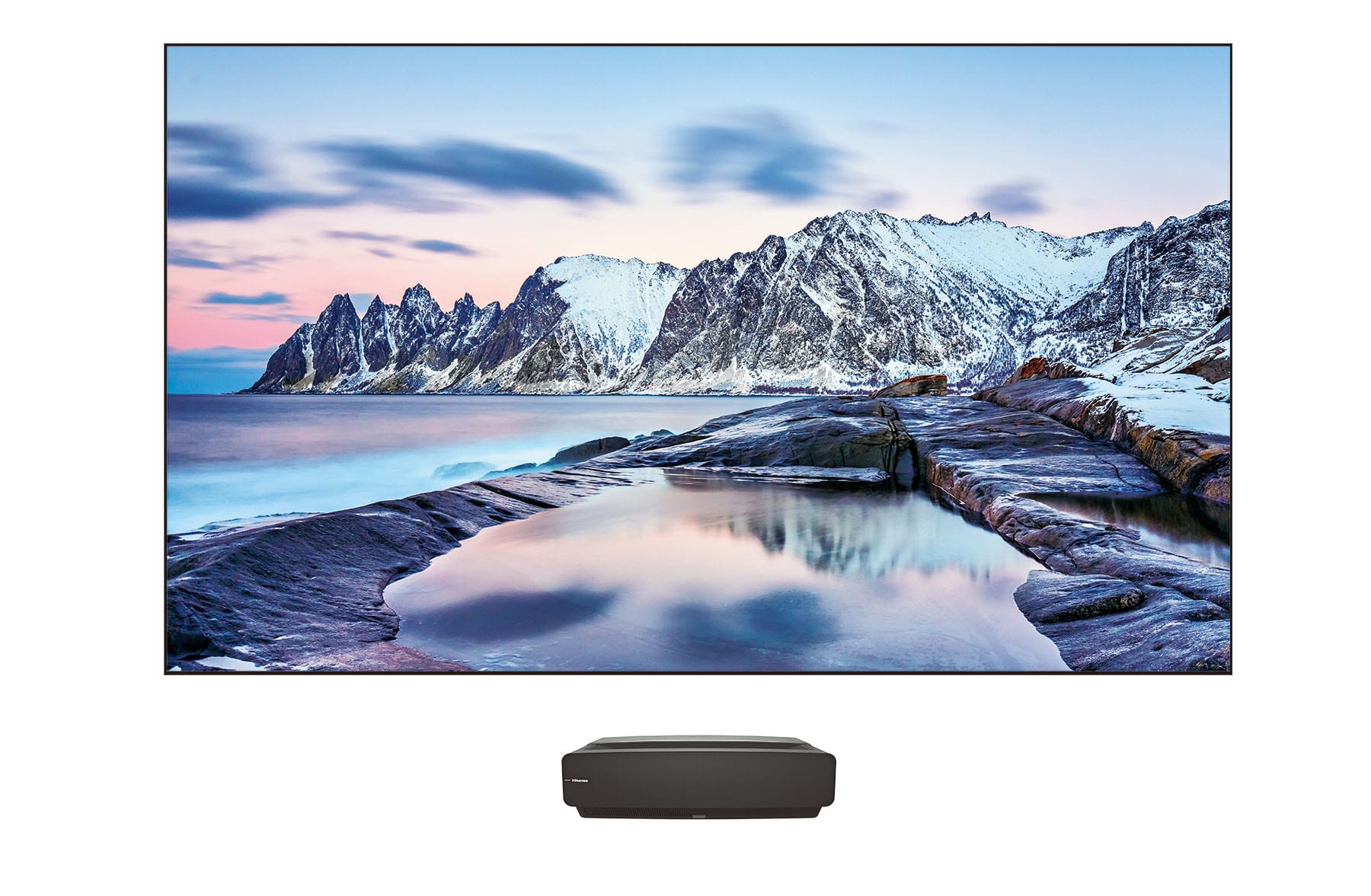 TV manufacturer Hisense is jumping belatedly into the ultra short throw projector game at CES 2020 with its own model, along with a bunch of new inexpensive 4K TVs. The L5 4K projector uses a blue laser to deliver huge, sharp images "while avoiding u...
TV manufacturer Hisense is jumping belatedly into the ultra short throw projector game at CES 2020 with its own model, along with a bunch of new inexpensive 4K TVs. The L5 4K projector uses a blue laser to deliver huge, sharp images "while avoiding u...
The VAVA 4K Laser Projector turns any wall into a 150-inch cinema screen

Place the VAVA 4K Laser Projector near any wall and there you have it… an instant movie theater. The VAVA 4K Laser Projector ultra-short throw (UST) design with Advanced Laser Phosphor Display (ALPD) technology that allows it to project a massive 150-inch projection on the nearby wall, immersing you in rich 4K content.
The UST format is beginning to pick up as apartments grow smaller, but demand for great displays and technology increases. In its small format, the projector fits the ability to cast a large display without even requiring any buffer space between the device and the screen (like regular projectors do). Its placement also means that the sound (which comes directly from VAVA’s in-built sound system) emerges from near the projected images, creating an experience that is believable and immersive.
The design of the 4K Laser Projector is simple, and follows the belief that home-tech should fit into home designs. With a gray design and a fabric clad, the VAVA projector is almost comparable to the other smart-devices you’d find around your house, from a Google Home to an Amazon Echo. Powered by Android 0S 7.1, the VAVA 4K Laser Projector makes it easy to access streaming media platforms through integrated software. Users will be able to access a variety of streaming media platforms along with a host of apps from the Google Play store.






The best way to Netflix and Chill
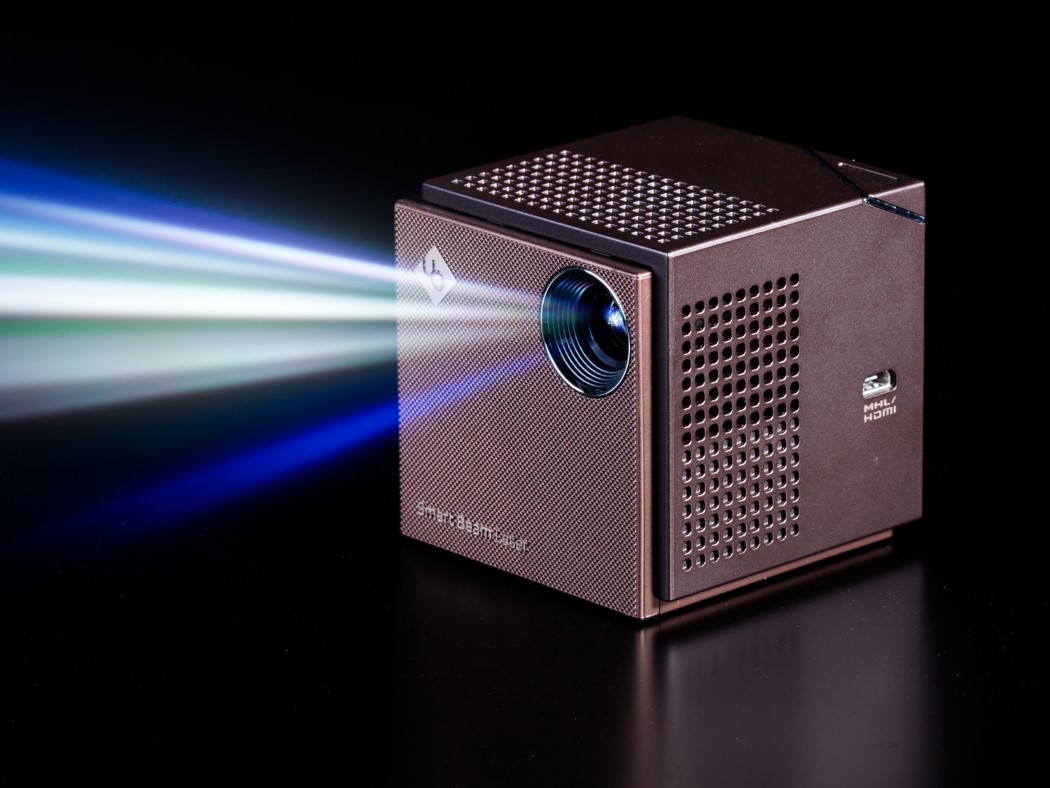
This little cube is the smallest 720p laser projector in the world! It sits right in your hand, giving you the feeling of wielding something rather powerful. It pairs seamlessly with iOS/Android phones, even tablets, and also your PC!
Carry it around anywhere and impress your home-boys with their new way of watching football, or the superbowl, or even lip-sync challenge (we don’t really judge). The Smart Beam (as it’s called) is as small as your phone and can project 720p video to a size of 150 inches. Now while that doesn’t seem too big, remember that you can always hold the projector further from the screen and get a larger projection, albeit at a slightly lower resolution, but that’s a trade-off most people would be willing to make! How often can you carry an HD projector around in your pocket??
Designer: UO
BUY NOW
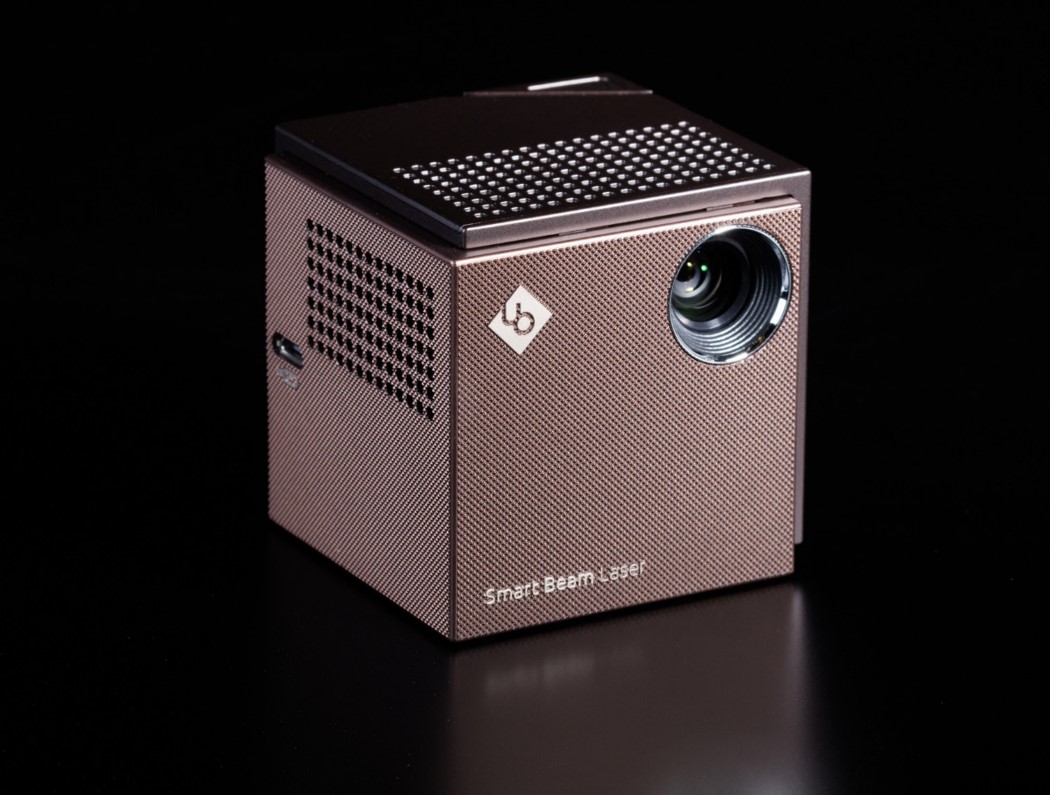
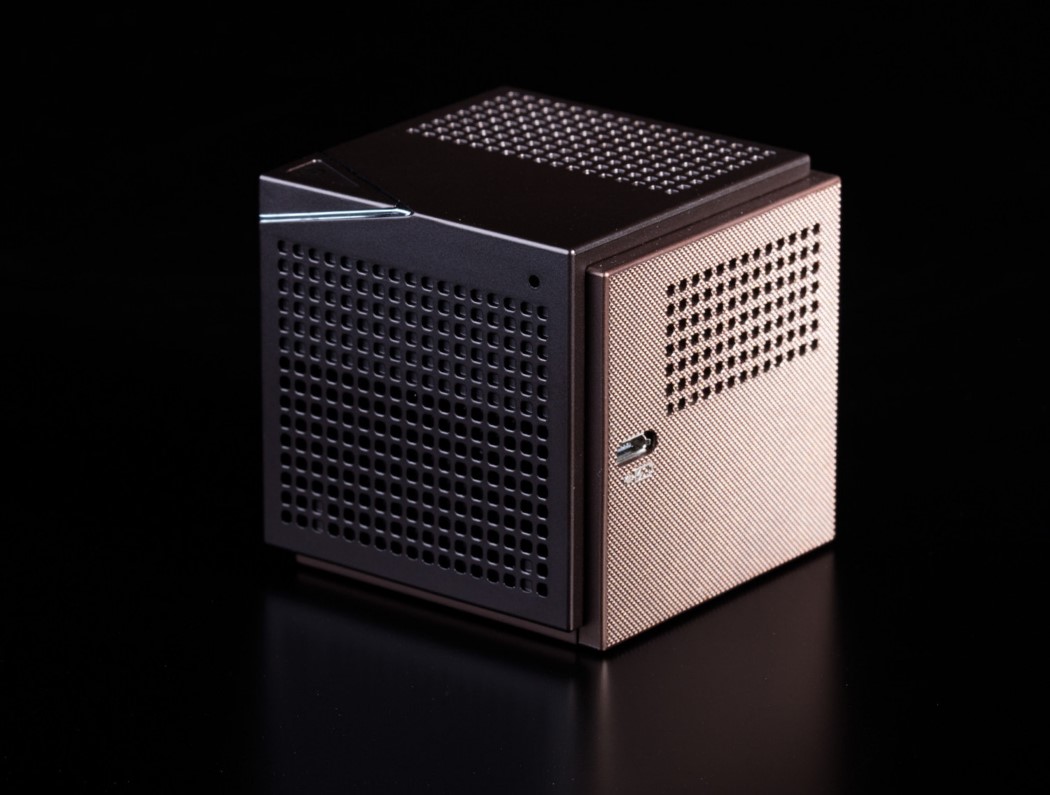
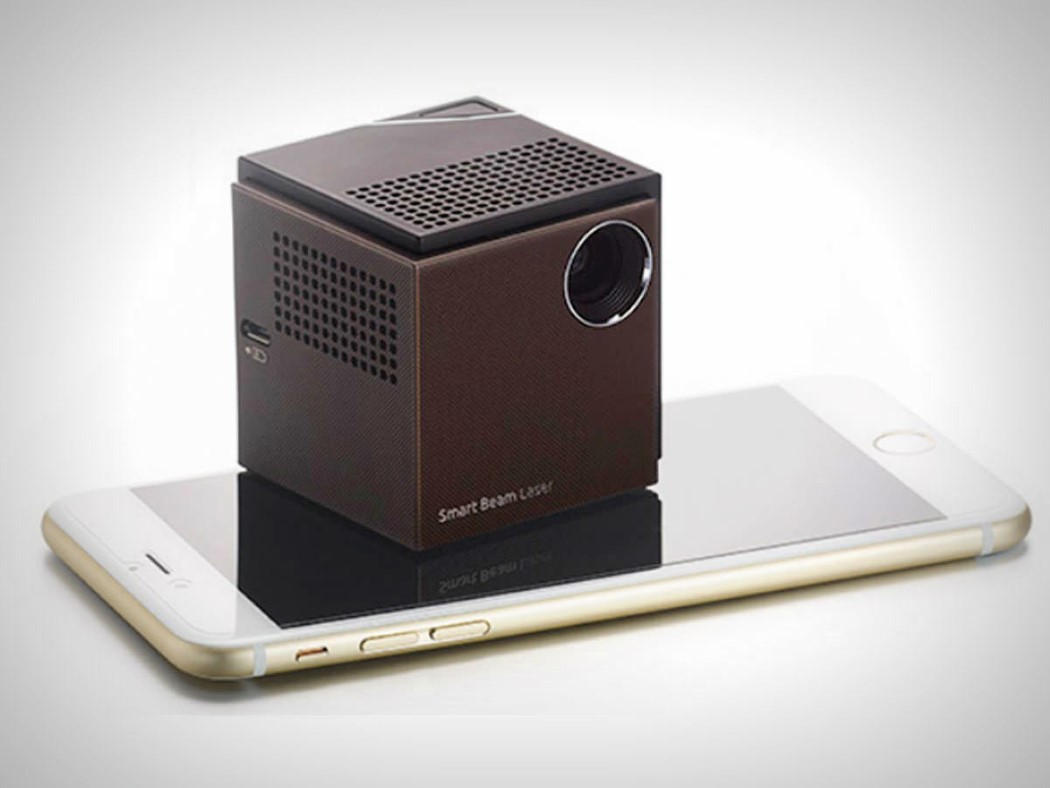
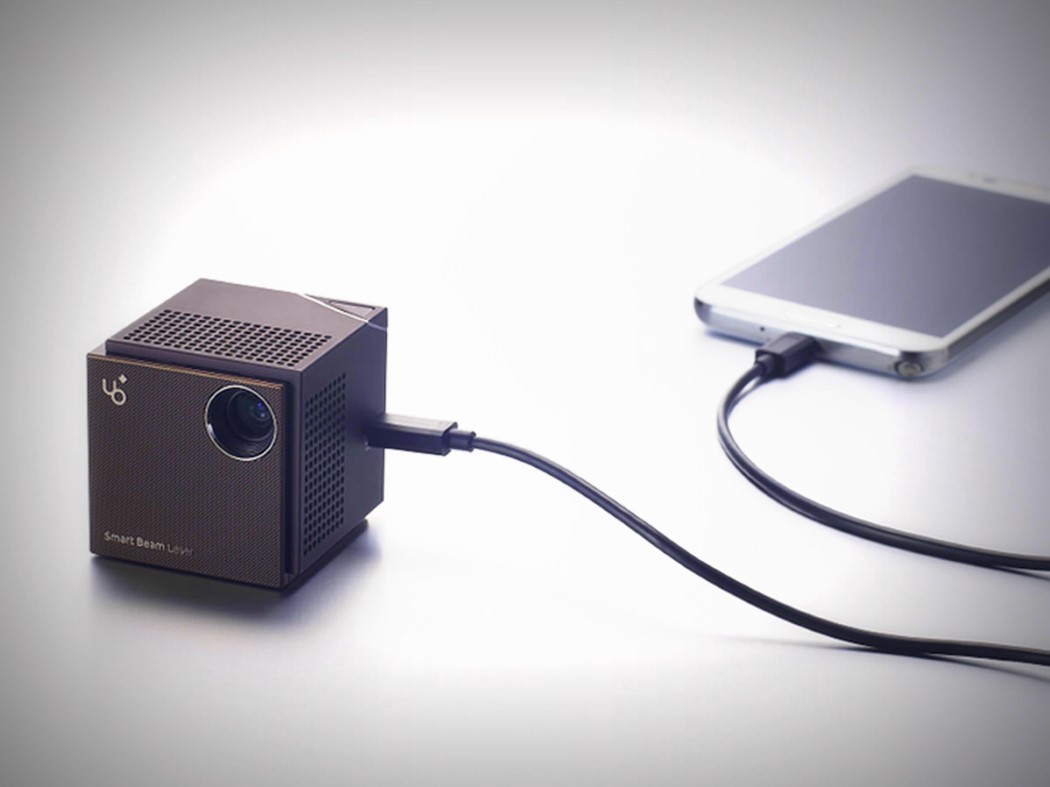
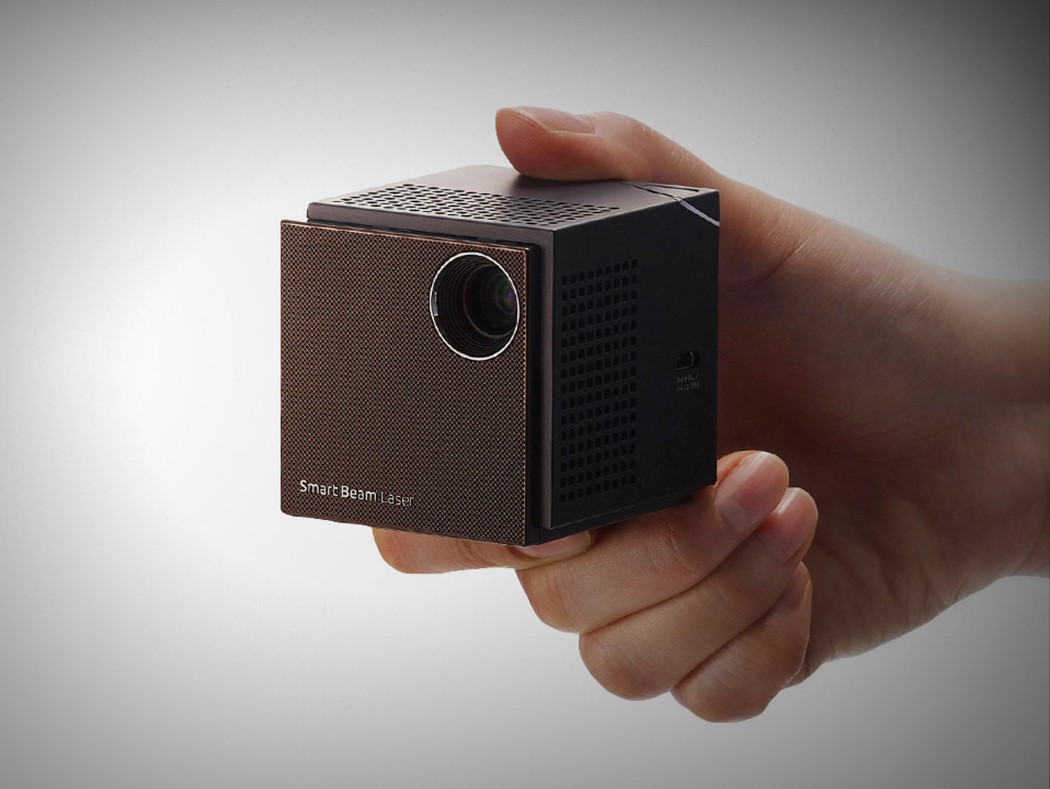
BUY NOW
Panasonic’s 7.5mm-thick, 100-lumen laser projector module claims world’s thinnest title
While scanning through Panasonic's booth at CEATEC 2012, we couldn't help but notice a prototype of its world's slimmest 100-lumen laser projector module (or OIU aka optical imaging unit, as the company prefers), which can beam out an 800 x 480 picture. It's not clear when exactly we'll see this 7.5mm-thick device getting into consumers' hands, but there's certainly room for improvement for the image quality. Likewise, the scan-type OIU (resolution at about 400 x 300) next to the slim projector is far from ready for mass consumption, as the company is hoping to actually shrink it down and integrate it into mobile phones. That said, the fact that this technology doesn't require focusing makes it worth the wait -- the light doesn't go through an LCD filter like ordinary projectors do, and instead, it's a single laser beam scanning out the picture, hence the name.
Also shown along side were the optical bay drive pico projector that's already being offered by Fujitsu, as well as the PJ-SJ25U 854 × 480 DLP pico projector which was released in August this year. While the latter's image quality was rather impressive even under the strong ambient lighting, we struggle to appreciate the ¥56,800 or $730 price tag. Anyhow, pricing is just a matter time, as always.
Update: The thickness of the slim laser OIU was originally mistyped as "75mm." This has now been corrected. Many apologies.
Filed under: Displays
Panasonic's 7.5mm-thick, 100-lumen laser projector module claims world's thinnest title originally appeared on Engadget on Thu, 04 Oct 2012 02:31:00 EDT. Please see our terms for use of feeds.
Permalink | | Email this | CommentsAcer breeds LEDs with lasers, new hybrid projector is born
Acer usually graces our pages for its pico projector range, but the company's taken a leaf out of the high-end book for its latest non-portable model, the K750 LED-laser hybrid. The world's first combo projector spits out 1080p, just as you would expect, at a contrast ratio of up to 100,000:1. Acer claims the color brightness, saturation and fidelity are significantly better than mercury lamps, and appears to be leaning towards the business and education markets, citing the K750's instant on / off capability to sway the productive types. If you fancy one of these in your house, however, better start saving your cash -- AVForums claims it'll be available in the UK later this month bearing a price tag of around £1,700 (approximately $2,650).
Continue reading Acer breeds LEDs with lasers, new hybrid projector is born
Filed under: Displays
Acer breeds LEDs with lasers, new hybrid projector is born originally appeared on Engadget on Wed, 08 Aug 2012 12:33:00 EDT. Please see our terms for use of feeds.
Permalink AVForums | | Email this | Comments
AVForums | | Email this | Comments Sony, Sumitomo push laser projectors forward with a new, more powerful green laser diode
As cool as lasers are, so far there are precious few commercially available display devices available that use them. That may change with this new green semiconductor laser diode announced by Sony and Sumitomo, capable of the brightness necessary to replace the more expensive light sources used to fill in the middle of the RGB setup. According to the two companies, it's the world's first one capable of over 100mW power at 530nm, which they think will make it a fit for both advanced projectors and compact light projectors. Check after the break for more details on how the technology came to be -- drawing heavily on Sumitomo's production techniques and Sony's GaN laser technology developed with Blu-ray -- we'll let you know when there's a LaserVue or REDray setup priced for general consumption.
Sony, Sumitomo push laser projectors forward with a new, more powerful green laser diode originally appeared on Engadget on Thu, 21 Jun 2012 07:47:00 EDT. Please see our terms for use of feeds.
Permalink | Sony | Email this | Comments
Sony | Email this | Comments REDray 4K cinema laser projector and player eyes-on (video)
There's no better way to control the visual experience from shoot to show than to create the camera and the projector. That's likely the thinking behind the REDray, the 4K laser cinema projector making an appearance at the company's NAB booth today. The device supports 2D and passive 3D (up to 120fps in 3D mode), with 4K projection for each eye and has a rated laser life of over 25,000 hours. While the device itself is likely to be hidden behind glass in an elevated projector room, the REDray has the same industrial look and feel of its Scarlet and Epic capturing counterparts, with a solid matte metal construction, heavy duty bolts and dedicated access panels for the lens filter, the laser phase adjustment oscillator and the angular refraction aberration indexer. There's also a T1.8 50mm lens mounted up front, sufficiently completing the beautifully monstrous package. Also on display was the tablet-controlled REDray Player, which includes four HDMI 1.4 video outputs with 7.1-channel audio output, the ability to move 4K video to the internal hard drive and an SD reader for ingesting content. You'll also find dual gigabit Ethernet ports, along with USB and eSATA connectors.
The projector experience is much less about the hardware than it is the projections themselves, which certainly did a justice here -- especially considering the imaging device's mid-development status. During a screening of the 3D short Loom, which was shot with the RED Epic, images looked fantastic with accurate color and excellent dynamic range, allowing us to see every detail in a contrasty dark scene, where we were able to make out a very dimly lit female actress. The projection was incredibly sharp on the 24-inch foot screen, despite the film being displayed with 2K for each eye, rather than the maximum 4K. There will be two versions of the REDray projector, including a home theater flavor that supports screens up to 15 feet in size that'll ring in at under $10,000, and a professional model with support for larger venues. RED CEO Jim Jannard confirmed that the home-bound version will ship sometime this year, though he was unable to provide a more precise ship date. We weren't permitted to record video during the screening -- which is for the best, considering that there's really no way to do this thing justice -- but you can still flip through the gallery below for an early look at REDray.
Continue reading REDray 4K cinema laser projector and player eyes-on (video)
REDray 4K cinema laser projector and player eyes-on (video) originally appeared on Engadget on Mon, 16 Apr 2012 13:39:00 EDT. Please see our terms for use of feeds.
Permalink | | Email this | Comments












